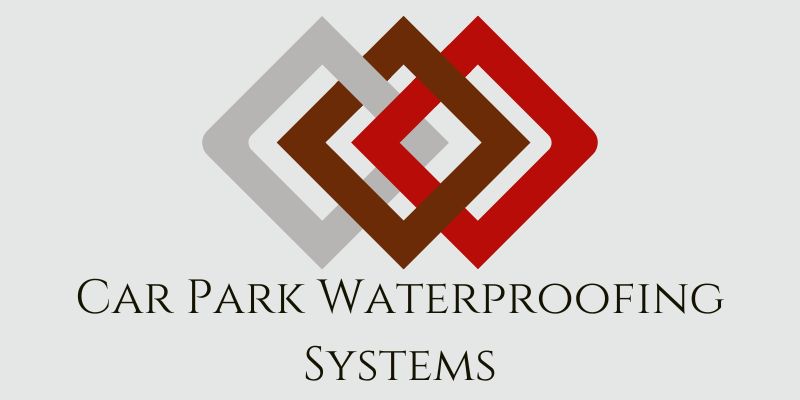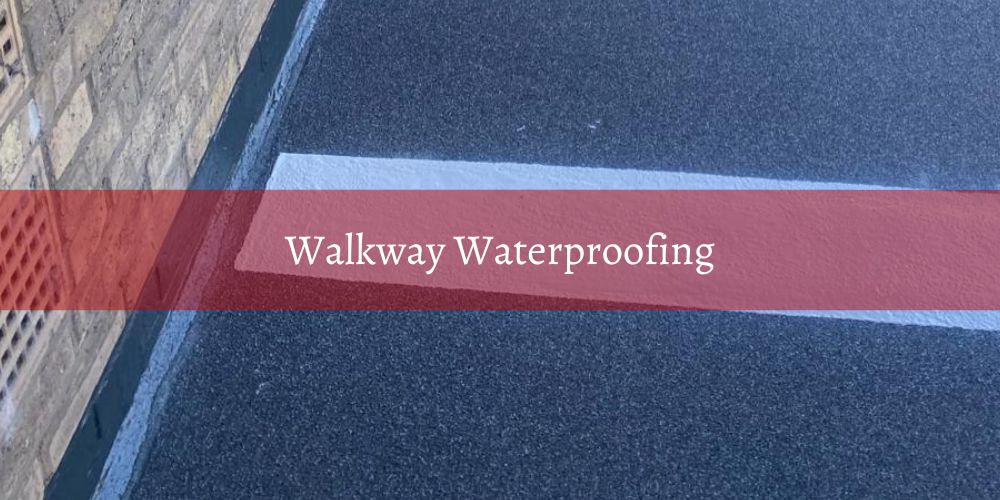Walkway waterproofing involves applying protective waterproofing materials to walkways to prevent water infiltration and damage. This process includes surface preparation, priming, and the application of waterproof membranes or coatings to create a durable, impermeable barrier. Effective waterproofing prevents issues such as cracking, spalling, and erosion, ensuring the longevity and safety of the walkway. It also enhances the walkway's appearance and reduces long-term maintenance costs.
Car Park Waterproofing Systems deliver specialist walkway waterproofing solutions to protect pedestrian routes from water ingress, surface damage, and daily wear. Our systems are designed for high-traffic areas such as access walkways, stairwells, ramps, and connecting decks, providing long-lasting protection and slip-resistant finishes. We offer a range of waterproofing options including mastic asphalt, liquid polyurethane, and PMMA coatings, each selected for their durability, flexibility, and suitability to the project’s environment. These seamless systems are ideal for exposed and sheltered walkways alike, offering excellent resistance to weather, UV, and thermal movement. With a choice of textured and colored finishes, Car Park Waterproofing Systems ensure your walkways remain safe, watertight, and visually integrated with the wider structure.
What Is Walkway Waterproofing?
Walkway waterproofing involves applying protective coatings or membranes to pedestrian pathways to prevent water ingress and related damage. This process is essential for maintaining the structural integrity and safety of walkways, particularly in areas exposed to frequent moisture, such as outdoor public spaces or building rooftops. Effective waterproofing prevents water from penetrating the surface, thereby reducing the risk of cracks, spalling, and deterioration of the walkway materials. According to the Building Research Establishment (BRE), proper waterproofing can extend the lifespan of walkways by up to 50%. In the UK, where wet weather conditions are common, waterproofing walkways is crucial to prevent hazards such as slippery surfaces and ice formation, which can increase the risk of accidents. Moreover, high-quality waterproofing systems enhance the aesthetic appeal of walkways by preventing unsightly water stains and efflorescence. By incorporating eco-friendly waterproofing materials, property managers can also contribute to environmental sustainability, meeting regulatory requirements and improving the overall user experience.
Have a question about an upcoming project?
What Are The Benefits Of Walkway Waterproofing?
Walkway waterproofing offers numerous benefits, making it an essential practice for maintaining pedestrian pathways. The primary advantage is enhanced safety, as waterproofing reduces the risk of slips and falls by preventing water accumulation and ice formation. Additionally, it protects the structural integrity of walkways by preventing water-related damage such as cracks and spalling. This process extends the lifespan of the walkway, reducing the need for frequent repairs and saving on long-term maintenance costs. Moreover, waterproofed walkways maintain their aesthetic appeal, ensuring a clean and visually pleasing environment. Compliance with regulatory standards and contributing to environmental sustainability are further benefits of walkway waterproofing.
- Enhanced Safety
- Structural Integrity Protection
- Extended Lifespan
- Cost Efficiency
- Improved Aesthetic Appeal
- Regulatory Compliance
- Environmental Sustainability
1. Enhanced Safety
Walkway waterproofing significantly enhances safety by preventing water accumulation and ice formation, which can lead to slips, trips, and falls. According to the Health and Safety Executive (HSE), well-maintained surfaces can reduce accident rates by up to 30%. In the UK, where wet and icy conditions are common, effective waterproofing is crucial to maintaining safe pedestrian pathways. Waterproofing systems create a non-slip surface that minimizes hazards, ensuring a safer environment for all users. Additionally, the use of materials designed to enhance traction further contributes to reducing slip hazards, particularly during the winter months when icy conditions are prevalent.
2. Structural Integrity Protection
Walkway waterproofing is essential for protecting the structural integrity of pedestrian pathways. Water infiltration can lead to severe damage, including cracks, spalling, and erosion of concrete or asphalt surfaces. The Chartered Institution of Building Services Engineers (CIBSE) states that effective waterproofing can prevent up to 80% of structural damage caused by water ingress. In the UK's variable climate, maintaining the integrity of walkways through waterproofing is vital for ensuring their long-term stability and safety. Waterproofing also helps to protect against the freeze-thaw cycle, which can cause significant structural damage over time by expanding cracks and allowing more water to penetrate the surface.
3. Extended Lifespan
Waterproofing extends the lifespan of walkways by protecting them from water-related damage. Research by the Building Research Establishment (BRE) indicates that well-maintained waterproofing systems can double the service life of concrete structures, typically extending their lifespan from 30 to 50 years. By applying durable waterproofing materials, the need for frequent and costly repairs is minimized, ensuring that walkways remain functional and durable over an extended period. This proactive maintenance approach is particularly important in the UK's harsh weather conditions, where exposure to rain, snow, and ice can accelerate the deterioration of untreated surfaces.
4. Cost Efficiency
Investing in walkway waterproofing is a cost-efficient strategy that prevents the need for extensive and expensive repairs in the future. The BRE reports that preventive maintenance, including waterproofing, can reduce overall repair costs by up to 40%. By addressing potential water ingress issues early on, property owners and facility managers can avoid the high costs associated with major structural repairs and emergency maintenance. In the UK, where the cost of construction and repair is high, waterproofing provides a cost-effective solution for maintaining the functionality and appearance of walkways. Moreover, reducing the frequency of major repairs and replacements contributes to lower overall maintenance expenses, providing significant long-term savings.
5. Improved Aesthetic Appeal
Waterproofing helps preserve the aesthetic appeal of walkways by preventing water stains, efflorescence, and other forms of water damage that can detract from the visual quality of the facility. The Urban Land Institute notes that aesthetically pleasing properties can increase property values by up to 10%. In the UK, maintaining an attractive appearance is vital for commercial and residential properties to stay competitive. Effective waterproofing ensures that walkways remain visually appealing, reflecting well on the property's overall management and enhancing user satisfaction. This not only contributes to a positive first impression but also fosters a pleasant environment for residents, visitors, and customers, boosting the overall appeal of the property.
6. Regulatory Compliance
Regular walkway waterproofing helps ensure compliance with UK building regulations and safety standards. The Construction Industry Research and Information Association (CIRIA) emphasizes the importance of maintaining watertight and structurally sound facilities to meet regulatory requirements. Compliance with these standards helps avoid fines and legal liabilities, ensuring that walkways operate within the legal framework. By addressing waterproofing issues, facility managers can meet all relevant safety and accessibility regulations, promoting a safe and legally compliant environment for all users. This includes adhering to guidelines set by the Equality Act 2010, which ensures that public spaces are accessible and safe for everyone, including individuals with disabilities.
7. Environmental Sustainability
Walkway waterproofing can incorporate sustainable practices, such as using eco-friendly materials and improving drainage systems to manage stormwater runoff effectively. According to the Environmental Protection Agency (EPA), sustainable waterproofing practices can reduce a facility’s carbon footprint by up to 30%. In the UK, where environmental regulations are becoming increasingly stringent, incorporating sustainability into waterproofing projects can help property owners meet these requirements and enhance their reputation as environmentally responsible businesses. Using recycled materials in the waterproofing process and implementing effective drainage solutions also contribute to environmental protection and sustainability. By promoting eco-friendly practices, property owners can attract environmentally conscious tenants and users, further enhancing the property's value and community impact.
If you need more information about walkway waterproofing or would like a quote for your project, click the button below. Our friendly and knowledgeable team is here to help you with all your waterproofing needs.


